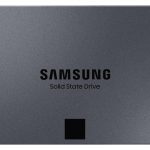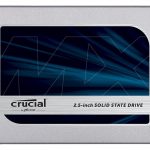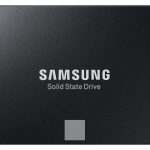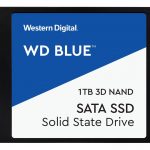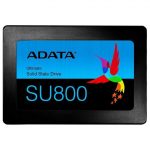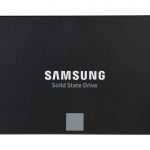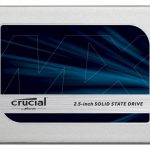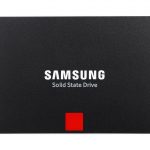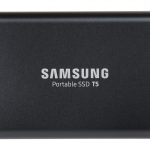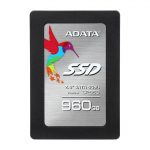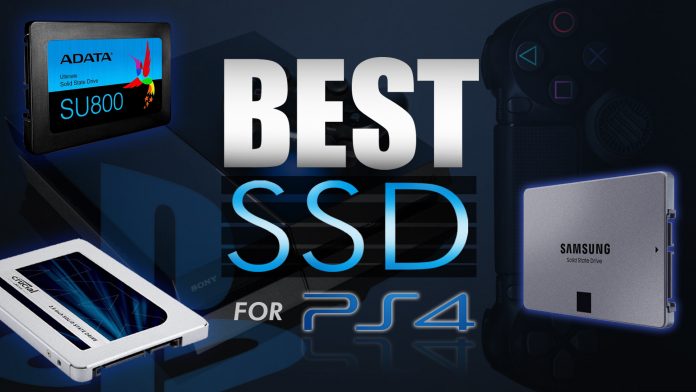
In the past, replacing the internal HDD of your PS4 with an SSD was hardly a sensible upgrade. The prices were too high and not worth the benefits you would get in return. Fortunately, the integration of the latest technology like 3D V-NAND and QLC has significantly reduced the cost per GB of SSDs. Now you can enjoy a much snappier console experience without breaking the bank! Keep on reading and find out how much a difference an SSD can make to improve your gaming experience.
PS4 SSD vs HDD: A Comparison
Before diving into our top picks for the best PS4 SSDs, we must first have a look at the standard HDD that comes with the system. They are the HGST Travelstar Z5K500 (500 GB Model) and the HGST Travelstar 5K1000 (1 TB Model). Both HDDs have a SATA II 3 GB/s interface and a sequential read and write speed of up to 120 MB/s. Remember these numbers in mind as you go through this list so you can get an idea of how an upgrade can drastically boost the performance of your console.
In general, you can expect a decrease in boot and load times of around 30-40%. This improvement is especially apparent in open-world games like Anthem, where load times are so frequent. Additionally, your PS4 user interface should feel much snappier thanks to the blazing fast random read and write speeds of SSDs.
Contents of this Page
Samsung 860 QVO SSD
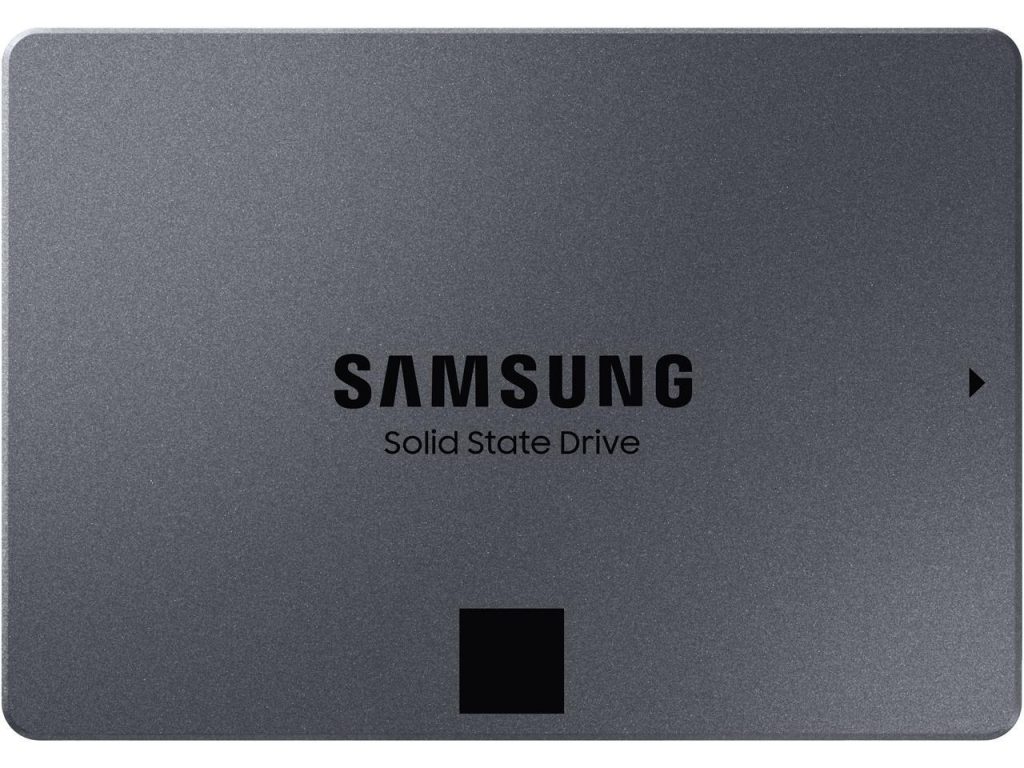
| Capacity |
1 TB |
2 TB |
4 TB |
| NAND Type |
Samsung 1 TB 64-Layer 3D QLC |
||
| Controller |
Samsung MJX |
||
| Interface |
SATA III 6 GB/s |
||
| Sequential Read Speed |
550 MB/s |
||
| Sequential Write Speed |
520 MB/s |
||
| Random Read Speed (4KB, QD32) |
97,000 IOPS |
||
| Random Write Speed (4KB, QD32) |
89,000 IOPS |
||
| Write Endurance |
360 TBW |
720 TBW |
1440 TBW |
| Warranty |
3 Years |
||
The Samsung 860 QVO SSD is one of the first drives on the market that use the latest NAND architecture. This new technology allows for a 33% increase in bit density over TLC NAND.
However, the 860 QVO suffers from decreased performance and endurance compared to the previous-generation 860 EVO. Nevertheless, you won’t notice these drawbacks on a gaming console due to the limitations of the CPU. The extremely low price and high capacity of this drive are enough to make it end up at the top of our list for the best internal SSD for PS4.
Crucial MX500 Solid State Drive
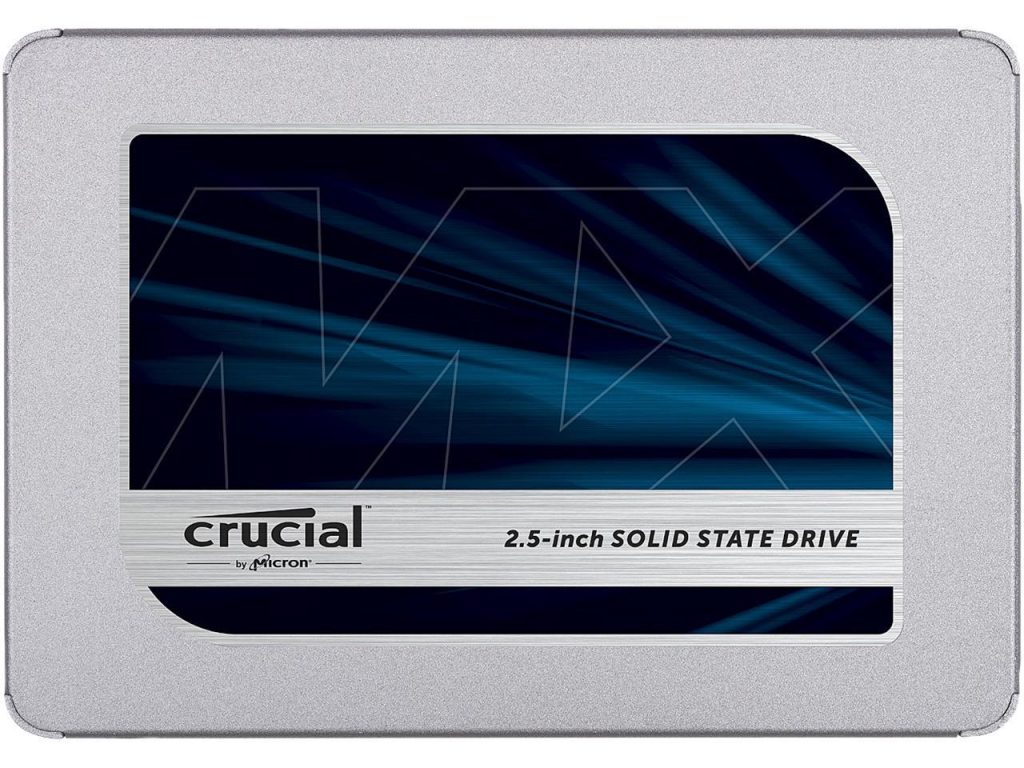
| Capacity |
250 GB |
500 GB |
1 TB |
2 TB |
| NAND Type |
Micron 256 GB 64-Layer 3D TLC |
|||
| Controller |
Silicon Motion SM2258 |
|||
| Interface |
SATA III 6 GB/s |
|||
| Sequential Read Speed |
560 MB/s |
|||
| Sequential Write Speed |
510 MB/s |
|||
| Random Read Speed (4KB, QD32) |
95,000 IOPS |
|||
| Random Write Speed (4KB, QD32) |
90,000 IOPS |
|||
| Write Endurance |
100 TB |
180 TB |
360 TB |
700 TB |
| Warranty |
5 Years |
|||
The Crucial MX500 is one of the few drives that comes close to the performance of competing high-end consumer drives. It even exceeds the Samsung 860 QVO in terms of reliability and warranty duration. Moreover, it has a useful and easy-to-use cloning software that you can use to transfer data from your stock PS4 HDD.
Aside from being edged out in read and write speeds, the only reason it is not any higher on this list is that it is slightly more expensive than our number one pick. You can expect the same boost in performance in your PS4 that you would get from the 860 QVO.
Samsung 860 EVO SSD
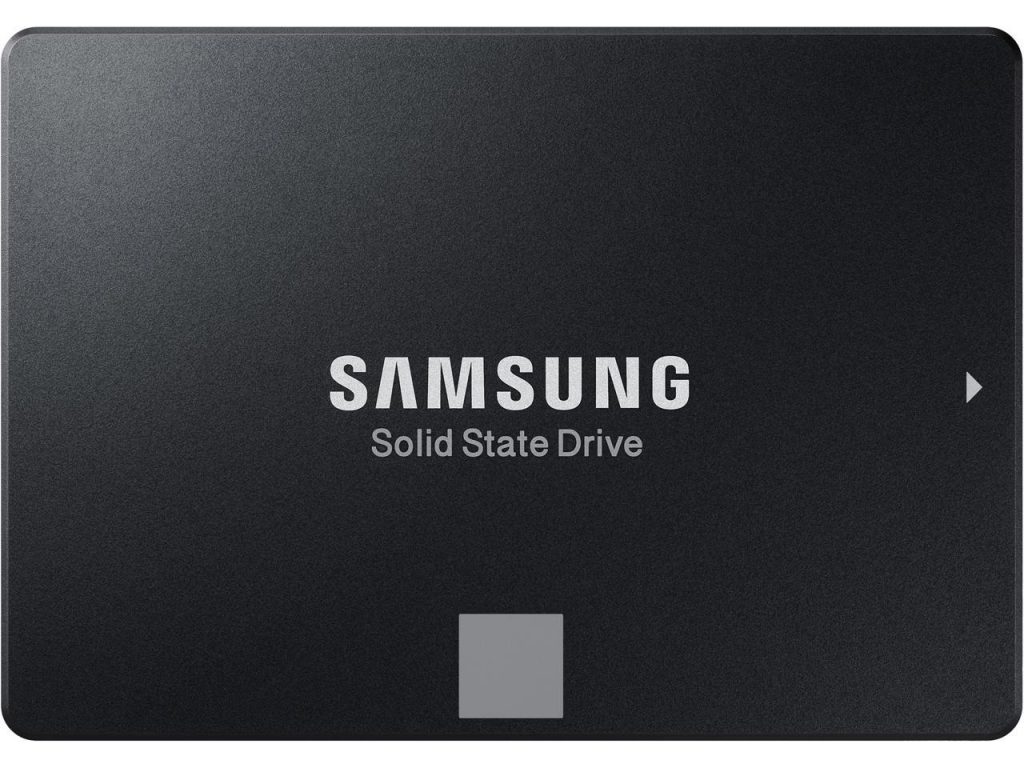
| Capacity |
250 GB |
500 GB |
1 TB |
2 TB |
4 TB |
| NAND Flash |
Samsung 64-Layer 3D TLC V-NAND |
||||
| Controller |
Samsung MJX |
||||
| Interface |
SATA III 6 GB/s |
||||
| Sequential Read Speed |
560 MB/s |
||||
| Sequential Write Speed |
520 MB/s |
||||
| Random Read Speed (4KB, QD32) |
98,000 IOPS |
||||
| Random Write Speed (4KB, QD32) |
90,000 IOPS |
||||
| Write Endurance |
150 TBW |
300 TBW |
600 TBW |
1200 TBW |
2400 TBW |
| Warranty |
5 Years |
||||
The Samsung 860 EVO was once widely considered the top SSD option for PS4 before the introduction of the 860 QVO. Despite being an older device, it performs slightly better than its latest counterpart. It is also much more dependable in terms of endurance and has a more extended warranty period to boast about its reliability. With the perfect blend of longevity and performance, you can’t go wrong with this drive. It should be your top option if you’re willing to dish out a few more extra bucks.
Western Digital Blue 3D NAND SSD
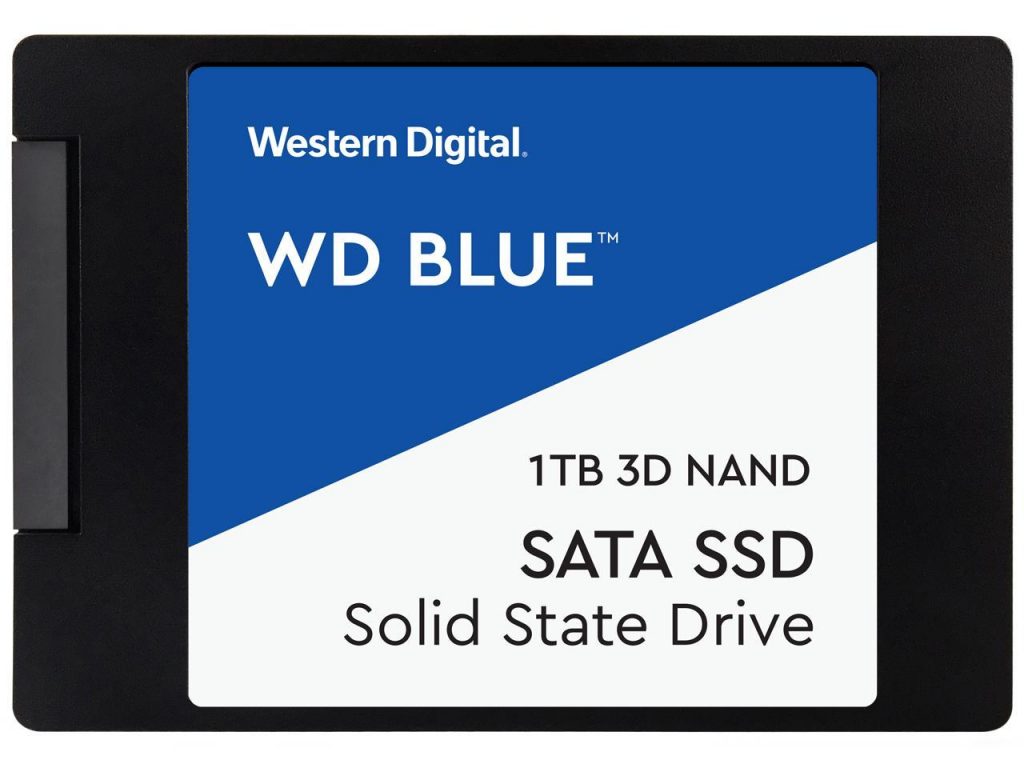
| Capacity |
250 GB |
500 GB |
1 TB |
2 TB |
4 TB |
| NAND Type |
SanDisk 64-Layer 3D TLC |
||||
| Controller |
Marvell 88SS1074 |
||||
| Interface |
SATA III 6 GB/s |
||||
| Sequential Read Speed |
550 MB/s |
560 MB/s |
|||
| Sequential Write Speed | 525 MB/s |
530 MB/s |
|||
| Random Read Speed (4KB, QD32) |
95,000 IOPS |
||||
| Random Write Speed (4KB, QD32) |
81,000 IOPS |
84,000 IOPS |
82,000 IOPS |
||
| Write Endurance |
100 TBW |
200 TBW |
400 TBW |
500 TBW |
600 TBW |
| Warranty |
3 Years |
||||
The Western Digital Blue 3D NAND is among the slate of the most recognizable brand in storage devices. You can expect to get what you pay for with this device. Although it has excellent write endurance, the warranty period is surprisingly short. It also has relatively weak random write speed performance, which is essential to improving the overall user interface of your PS4.
ADATA Ultimate SSD SU800
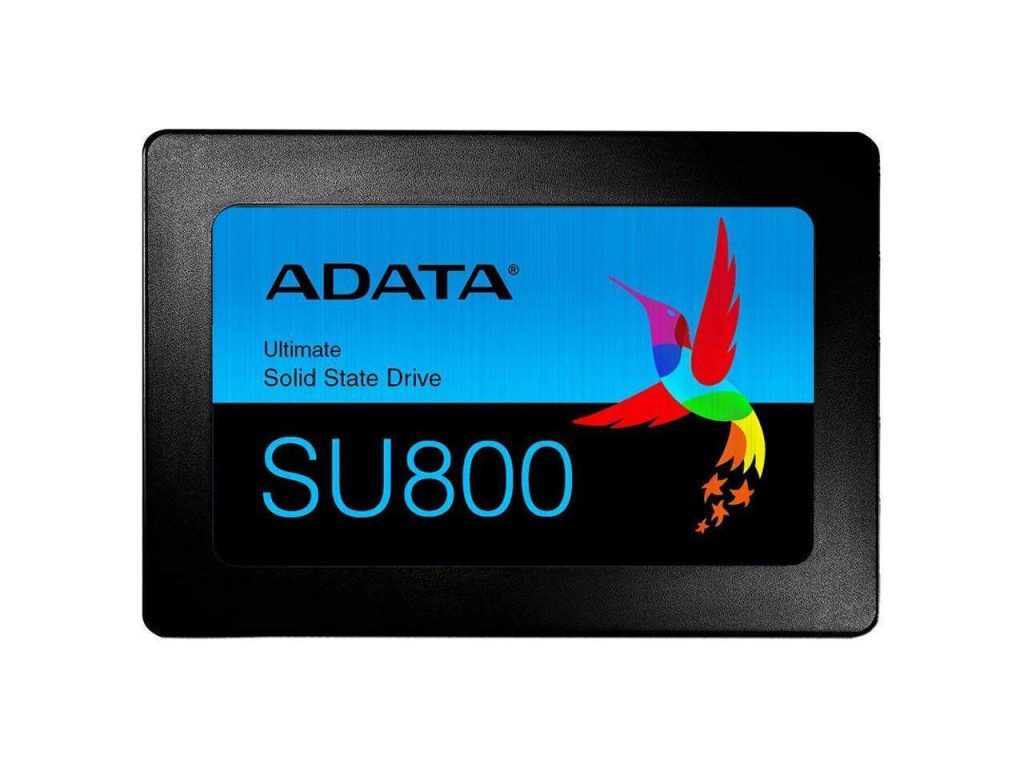
| Capacity |
128 GB |
256 GB |
512 GB |
1 TB |
| NAND Type |
Micron 32-Layer 384 GB 3D TLC |
|||
| Controller |
Silicon Motion SM2258 |
|||
| Interface |
SATA III 6 GB/s |
|||
| Sequential Read Speed |
560 MB/s |
|||
| Sequential Write Speed |
420 MB/s |
520 MB/s |
||
| Random Read Speed (4KB, QD32) |
50,000 IOPS |
80,000 IOPS |
85,000 IOPS |
80,000 IOPS |
| Random Write Speed (4K, QD32) |
75,000 IOPS |
85,000 IOPS |
80,000 IOPS |
|
| Write Endurance |
100 TBW |
200 TBW |
400 TBW |
800 TBW |
| Warranty |
3 Years |
|||
The ADATA Ultimate SU800 is a highly reliable SSD with double the write endurance on most of the competition. You can count on this device to store your games and saves for years without having to worry about a replacement. It may have some of the worst random read and write speed performance on this list, but you will still experience significant improvement from the stock HDD. If you want a durable PS4 SSD upgrade, consider this drive as one of your options.
Samsung 850 EVO SSD
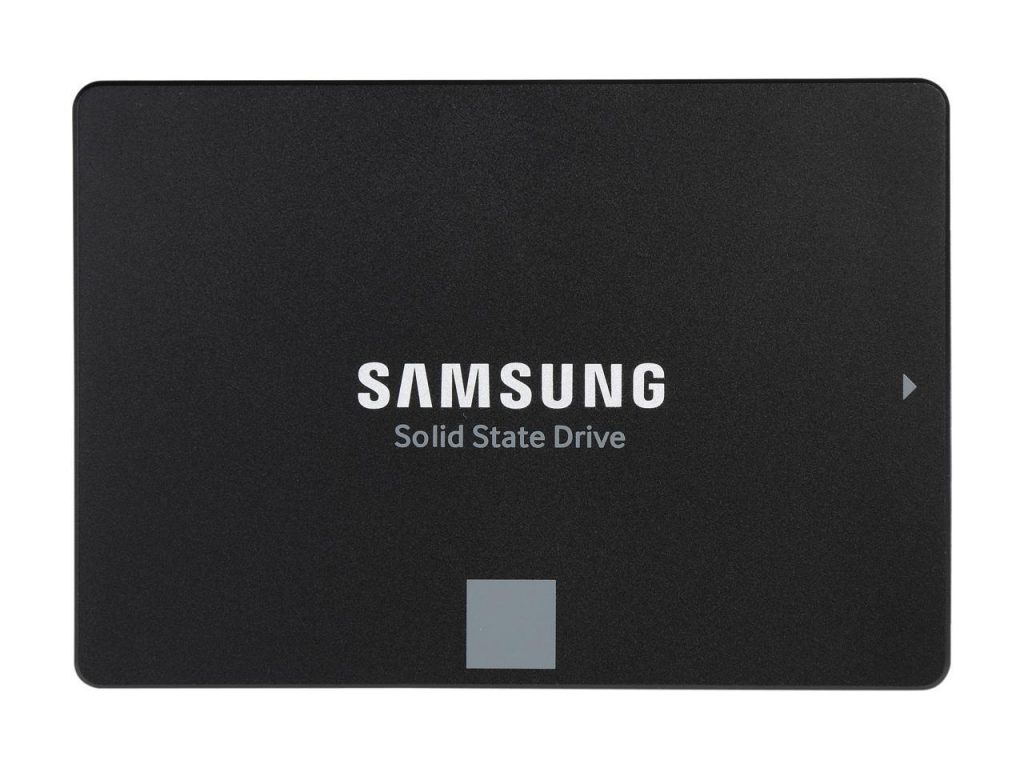
| Capacity |
120 GB |
250 GB |
500 GB |
1 TB |
2 TB |
4 TB |
| NAND Type |
Samsung 32-Layer 128 GB TLC V-NAND |
Samsung 48-Layer 256 GB TLC V-NAND |
||||
| Controller |
Samsung MGX |
Samsung MHX |
||||
| Interface |
SATA III 6 GB/s |
|||||
| Sequential Read Speed |
540 MB/s |
|||||
| Sequential Write Speed |
520 MB/s |
|||||
| Random Read Speed (4KB, QD32) |
94,000 IOPS |
97,000 IOPS |
98,000 IOPS |
|||
| Random Write Speed (4KB, QD32) |
88,000 IOPS |
90,000 IOPS |
||||
| Write Endurance |
75 TBW |
150 TBW |
500 TBW |
|||
| Warranty |
5 Years |
|||||
The Samsung 850 EVO offers various storage capacity options to fit your needs. You can go with the 250 GB model if you only play a couple of games or get the 4 TB model if you want to store an entire library of games. The sequential write speeds of this drive may be slower than the other options, but the limitations of the PS4 CPU make this difference negligible. However, it has lackluster write endurance compared to its successors. The 1 TB model has a write endurance of 150 TBW while the 860 EVO 1 TB model has 600 TBW.
Crucial MX300
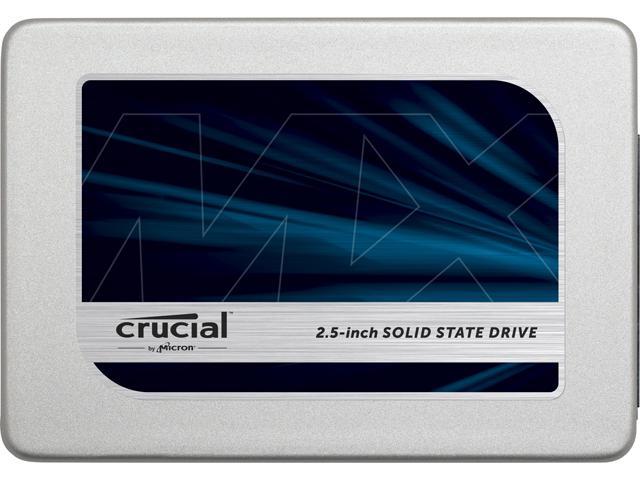
| Capacity |
275 GB |
525 GB |
750 GB |
1 TB |
2 TB |
| NAND Type |
Micron 384 GB 32-Layer 3D TLC |
||||
| Controller |
Marvell 88SS1074 |
||||
| Interface |
SATA III 6 GB/s |
||||
| Sequential Read Speed |
530 MB/s |
||||
| Sequential Write Speed |
500 MB/s |
510 MB/s |
|||
| Random Read Speed (4KB, QD32) |
55,000 IOPS |
92,000 IOPS |
|||
| Random Write Speed (4KB, QD32) |
83,000 IOPS |
||||
| Write Endurance |
80 TBW |
160 TBW |
220 TBW |
360 TBW |
400 TBW |
| Warranty |
3 Years |
||||
The Crucial MX300 is the predecessor to the Crucial MX500. Even though this drive was a popular option when it was first released, it is no match against the MX500 in terms of performance and pricing. It also has a shorter warranty period and lower write endurance compared to its successor. Nonetheless, it is an excellent replacement to the stock PS4 HDD and gives you a boost in performance that you will immediately notice. Like the Samsung 850 EVO, the MX300 has a variety of capacity models that you can choose among to fit your gaming needs.
Samsung 850 Pro SSD
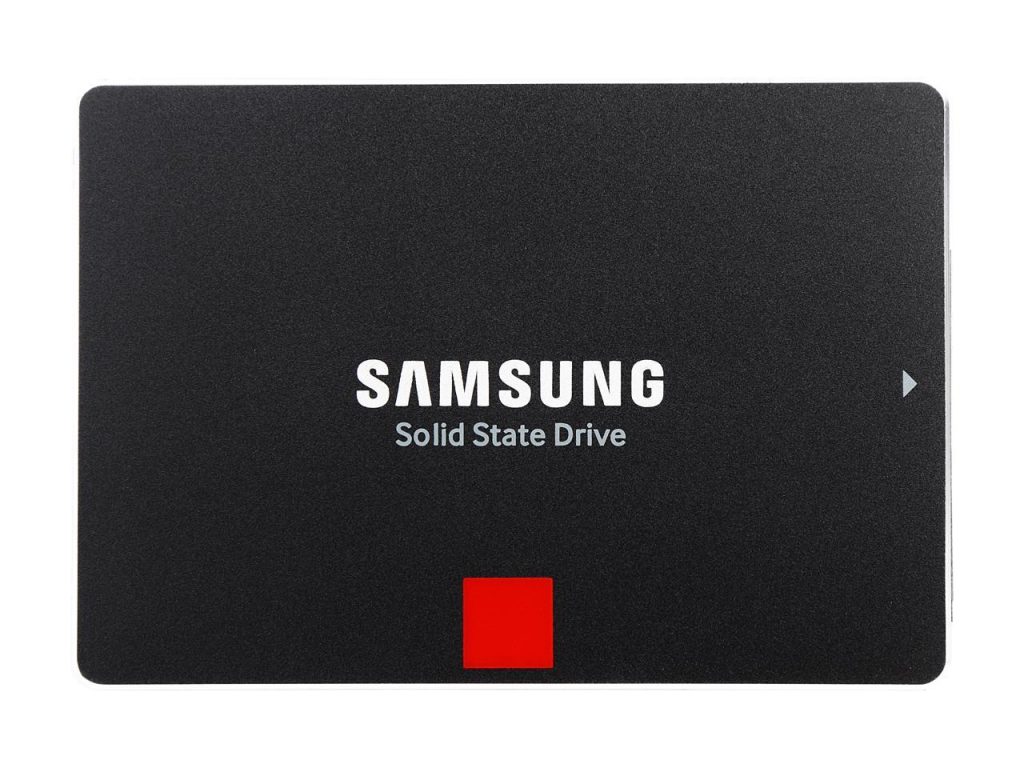
| Capacity |
128 GB |
256 GB |
512 GB |
1 TB |
2 TB |
| NAND Type | Samsung 32-Layer MLC V-NAND | ||||
| Controller | Samsung MEX |
Samsung MHX |
|||
| Interface | SATA III 6 GB/s | ||||
| Sequential Read Speed |
550 MB/s |
||||
| Sequential Write Speed |
470 MB/s |
520 MB/s |
|||
| Random Read Speed (4KB, QD32) |
100,000 IOPS |
||||
| Random Write Speed (4KB, QD32) |
90,000 IOPS |
||||
| Write Endurance |
150 TBW |
300 TBW |
|||
| Warranty |
10 Years |
||||
The Samsung 850 Pro is undoubtedly the most expensive drive on this list. It costs nearly triple the price of other alternatives but comes with a few upsides that may be of interest to gaming enthusiasts. For starters, it has the fastest random read speed out of all our picks. It potentially offers you the quickest boot and load times as well as respectable download and transfer speeds. Additionally, it has the most extended warranty period to assure quality and durability. If money is not an issue for you, this is a great option.
Samsung Portable SSD T5
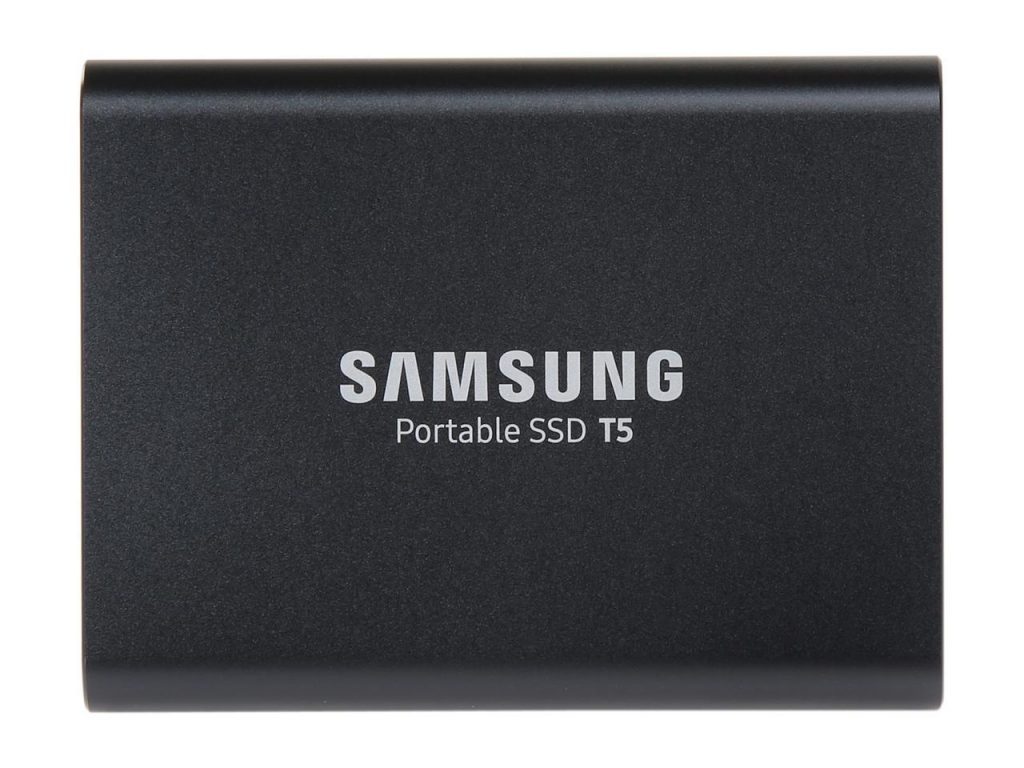
| Capacity |
250 GB |
500 GB |
1 TB |
2 TB |
| NAND Type |
Samsung 64-Layer TLC V-NAND |
|||
| Controller |
Samsung MGX |
|||
| Interface |
USB 3.1 Gen 2 10 GB/s |
|||
| Transfer Speed |
540 MB/s |
|||
| Warranty |
3 Years |
|||
The Samsung Portable SSD T5 is an external storage device that you can use to store your game library. What makes this option sensible is that you don’t have to remove the internal HDD on your PS4. You can use it to extend your storage and reduce the load times of your games. Setting up the drive to the correct format is also straightforward. The entire procedure can be done through your console. Thus, this drive is easily the best external SSD for PS4.
ADATA SSD Premier SP550
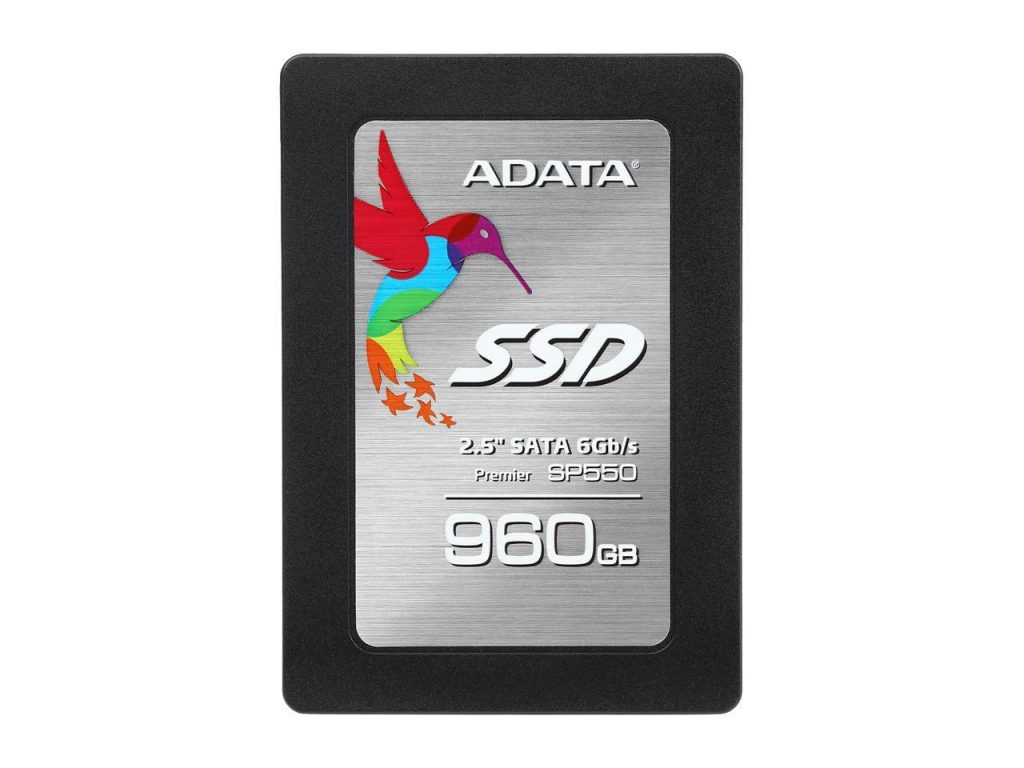
| Capacity |
120 GB |
240 GB |
480 GB |
960 GB |
| NAND Type |
SK Hynix 16 nm TLC |
|||
| Controller |
Silicon Motion SM2256 |
|||
| Interface |
SATA III 6 GB/s |
|||
| Sequential Read Speed |
560 MB/s |
520 MB/s |
||
| Sequential Write Speed |
410 MB/s |
510 MB/s |
490 MB/s |
|
| Random Read Speed (4KB, QD32) |
60,000 IOPS |
75,000 IOPS |
80,000 IOPS |
|
| Random Write Speed (4KB, QD32) |
70,000 IOPS |
75,000 IOPS |
35,000 IOPS |
|
| Write Endurance |
90 TBW |
90 TBW |
180 TBW |
360 TBW |
| Warranty |
3 Years |
|||
The ADATA SSD Premier SP550 is an inexpensive drive that is relatively old compared to the other alternatives on this list. Since it is older than the other options, it also has some of the most disappointing performance numbers. The 960 GB model is especially a let down with the slowest random read and write speeds by far. Although these speeds are enough to boost your PS4, there are plenty of cheaper and more powerful choices.
Buyers Guide
Technically, any SSD with transfer rates of 300 MB/s can maximize the overall performance of your PS4. The reason for this is that gaming consoles cannot fully leverage the high speeds of these devices due to the limitations of their CPU. Nonetheless, replacing the stock PS4 HDD with an SSD is one of those PS4 upgrades that you will immediately notice and appreciate.
What you should seriously consider when looking for a PS4 SSD is its reliability as well as its price. Other than that, any option on this list will give you a significant boost in performance. If you want to pick the most suitable PS4 SSD according to your preference, continue reading this guide.
NAND Type
NAND is a type of flash memory integrated into SSDs for storage. It is non-volatile, meaning it does not require power to store or retain data. NAND falls into several types, namely single-level cell, multi-level cell, triple-level cell, and quad-layer cell.
Single-Level Cell (SLC)
SLC NAND can store one bit of data per cell. SSDs integrated with SLC NAND cost more to manufacture and have the advantage of lower power consumption as well as higher cell endurance. However, they are mainly found in enterprise-grade drives as they are too expensive for general use.
Multi-Level Cell (MLC)
MLC NAND creates a compromise between data density, longevity, performance, and price. It can store two bits of data per cell and was once the standard for SSD manufacturers since they can be produced at a much lower cost. Although it is slower than SLC NAND, it is capable of higher storage capacity at a more affordable price for mass consumption.
Triple-Level Cell (TLC)
TLC NAND was designed for budget-oriented SSDs and can store three bits of data per cell. It is capable of higher storage capacity and costs less to produce than MLC NAND. On the other hand, it features lower write endurance compared to the previous two NAND types.
Quad-Level Cell (QLC)
QLC NAND features the latest flash memory architecture. It can store four bits of data per cell and offers 33% more bit density over the previous NAND type. However, it suffers from poor endurance, and speed performance as both these aspects decrease the more bits can be stored in a cell.
3D V-NAND
3D V-NAND is a technology that stacks flash memory cells vertically. Traditionally, these cells were stacked horizontally. This architecture limited the capacity of drives and made the cost of producing an SSD significantly high. 3D V-NAND revolutionizes drive technology by compromising performance and durability for a lower cost per GB. It has made SSDs more sensible for mass consumption.
Sequential Read/Write Speed
Sequential read and write speeds determine how fast an SSD can transfer large amounts of data on or off the drive. These numbers primarily affect your game download speeds and when moving large save or game files. While having an SSD perform well in these aspects is important, what matters more for your console is how a drive performs in terms of random read and write speeds.
Random Read/Write Speed
Random read/write speed is a metric that more accurately gauges the real-world performance of an SSD. They are measured in terms of Input/Output Operations Per Second (IOPS), which counts the random pings to the drive. It determines how fast your PS4 can boot up and load game environments. Moreover, high random read and write speeds can make your user interface experience snappier. Browsing through your menus and opening applications should be much smoother.
Write Endurance and Warranty
Write endurance is the total amount of data that an SSD is guaranteed to be able to write within the warranty period. It is determined in Terabytes Written (TBW). While the anatomy of an SSD is complex, their longevity is easy to explain: they wear out over time as you write to them. It is essential that you choose a drive with high right endurance and an extended warranty. If you don’t want to be constantly worrying about buying multiple replacement drives over a few years, the ideal warranty period should be five years or more.
Roundup: The 10 Best SSDs For Ps4 in 2020
- Samsung 860 QVO 1TB SSD
- Crucial MX500 1TB 3D NAND SATA 2.5 Inch Internal SSD
- Samsung SSD 860 EVO 1TB
- WD Blue 3D NAND 500GB Internal PC SSD
- ADATA USA Ultimate Su800 1TB Internal SSD
- Samsung 850 EVO 1TB SSD
- Crucial MX300 525GB 3D NAND SATA
- Samsung 850 PRO – 512GB – 2.5-Inch SATA III Internal SSD
- Samsung T5 Portable SSD
- ADATA Premier SP550 480GB 2.5 Inch SATA III SSD

